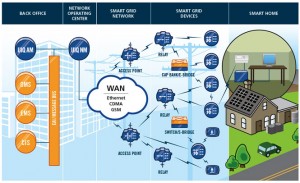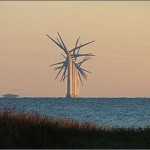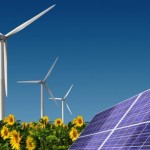Search Results for Tag: energy
Reduce your electricity consumption by social media
Are you also wondering, why your electricity bills are so high? Probably you are not paying enough attention on your energy saving opportunities. The social network “welectricity” can help you understand what you could do better. It allows you to contribute your information on the energy consumption habits and to compare them with your friends. This idea made welectricity one of the top 10 ideas that had been put forward in the General Electric ECOmagination global contest. GLOBAL IDEAS has met the founder of welectricity, Herbert Samuel.
Smart Grids

As more and more countries start to integrate renewable energy into the mix, the need for smart grids is also growing. What are smart grids? They’re a type of electricity network controlled by digital technology–and that network runs straight from a power plant right into your home. The idea is to make the flow of electricity more reliable and efficient AND be able to better integrate alternative energy sources, like wind power, solar energy, etc.
One of the most important parts of smart grids is actually the intelligence aspect. The technology allows energy consumers to actually track how much energy they use, and when. So that means, you can actually keep track of your own energy ‘behavior.’ It sounds a bit confusing, but you can read more about how smart grids work on the EU’s dedicated website.
There is one catch, though. Privacy protection advocates are worried that your energy information–how much electricity you use, when you use the most, etc.–might not be secure with smart grids. Basically, they believe smart grids could give big energy companies access to information about you that they can store and use for other purposes.
What do you think? Do you think privacy is a big concern when it comes to smart grids? Why?
The Little Island That Could
Have you ever heard about the small Danish island called Samsø? It's home to only 4,000 people and stretches over about 103 square kilometers of land…and it's 100% energy self-sufficient! Using a combination of offshore wind power, solar energy and biofuels, Samsø has created a green haven, cutting CO2 emissions by an incredible 140% in just 10 years.
The model has been so successful that Samsø even exports energy to mainland Denmark and acts as a model for other islands that are interested in developing renewable energy. It's become a local attraction, too: around 20,000 people flock there during the summer. So what can the rest of the world learn from Samsø? Is a completely energy efficient life possible in bigger regions with large populations, too?
EU Sustainable Week
Monday marked the start of the EU Sustainable Energy Week 2011. The week-long initiative began back in 2005 as a way to raise awareness about the importance of renewable energy in Europe and address issues in the industry. There are hundreds of events that will take place between April 11th and April 15th across Europe–and more than 30,000 people in 43 countries will take part.
The European Commission is behind the event, and it showed support for alternative energy with a new plan for deploying smart grids and meters. The concept behind the plan is a meter system called "Smart Grid Communication" that could save consumers up to 10% on their energy bills.
The official EU website for the Sustainable Energy Week has an interactive map where you can check out what's going on in your country and when. But if you live in an area where there are no activities planned, you can organize your own Energy Day! There are even special flyers available on the website!
Earth Hour 2011
Yesterday was Earth Hour 2011–did you take part? Or watch the lights turn out in your city? Earth Hour was started by World Wildlife Fund, or WWF, in 2007, and now it takes place every year on the last Saturday in March. For one hour across the globe, homes and businesses switch off their lights and electrical appliances to send a message about climate change.
The participation has grown year after year: in 2010, 126 countries took part, compared to 96 the year before. It's always an impressive site to see major cities like Sydney, New York, Paris and Berlin power down for an hour–the Russia Today video above gives you an idea of what it looks like. But every household and every person who takes part is also making a major contribution.
Do you have pictures from Earth Hour 2011? Post them on our GLOBAL IDEAS Facebook site!










Feedback